Key Processes of the Water Cycle
Evaporation:
Evaporation is the process by which water from bodies of water, such as oceans, rivers, and lakes, is converted into water vapor due to the heat from the sun. This water vapor rises into the atmosphere.
Condensation:
As the water vapor rises, it cools and condenses to form clouds. This process is known as condensation. Water droplets in the clouds come together to form larger droplets or ice crystals.
Precipitation:
Precipitation occurs when the water droplets in the clouds become too heavy and fall to the Earth's surface as rain, snow, sleet, or hail.
Runoff:
When precipitation reaches the Earth's surface, it can either infiltrate into the ground to become groundwater or flow over the surface as runoff, eventually making its way back to bodies of water such as rivers, lakes, and oceans.
Importance of the Water Cycle
The water cycle is crucial for the distribution of fresh water across the Earth and is essential for supporting life and ecosystems. It helps to replenish water sources, maintain ecosystems, and regulate the Earth's temperature.Study Guide for the Water Cycle
1. Define the water cycle and its key processes.
The water cycle is the continuous movement of water on, above, and below the surface of the Earth. Key processes include evaporation, condensation, precipitation, and runoff.
2. Explain the role of the sun in driving the water cycle.
The sun's energy drives the water cycle by causing evaporation of water from bodies of water, leading to the formation of water vapor in the atmosphere.
3. Describe the importance of the water cycle for supporting life and ecosystems.
The water cycle is essential for distributing fresh water, maintaining ecosystems, and regulating the Earth's temperature, all of which are critical for supporting life on Earth.
4. Identify the different forms of precipitation that can occur as part of the water cycle.
Precipitation can occur in the form of rain, snow, sleet, or hail, depending on atmospheric conditions and temperature.
5. Explain the concept of runoff and its role in the water cycle.
Runoff is the flow of water over the Earth's surface, eventually making its way back to bodies of water. It plays a crucial role in the water cycle by helping to replenish water sources and maintain the balance of water on Earth.
[The Water Cycle] Related Worksheets and Study Guides:
.◂Science Worksheets and Study Guides Fifth Grade. Science Worksheets: Acids and bases

 Activity Lesson
Activity Lesson
 Worksheet/Answer key
Worksheet/Answer key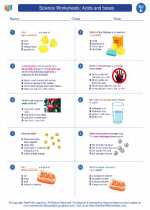
 Worksheet/Answer key
Worksheet/Answer key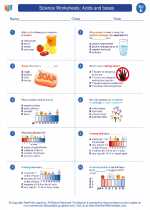
 Worksheet/Answer key
Worksheet/Answer key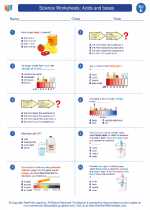
 Worksheet/Answer key
Worksheet/Answer key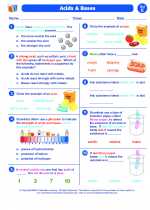
 Vocabulary/Answer key
Vocabulary/Answer key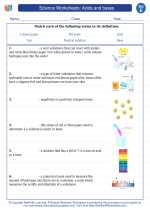
 Vocabulary/Answer key
Vocabulary/Answer key
